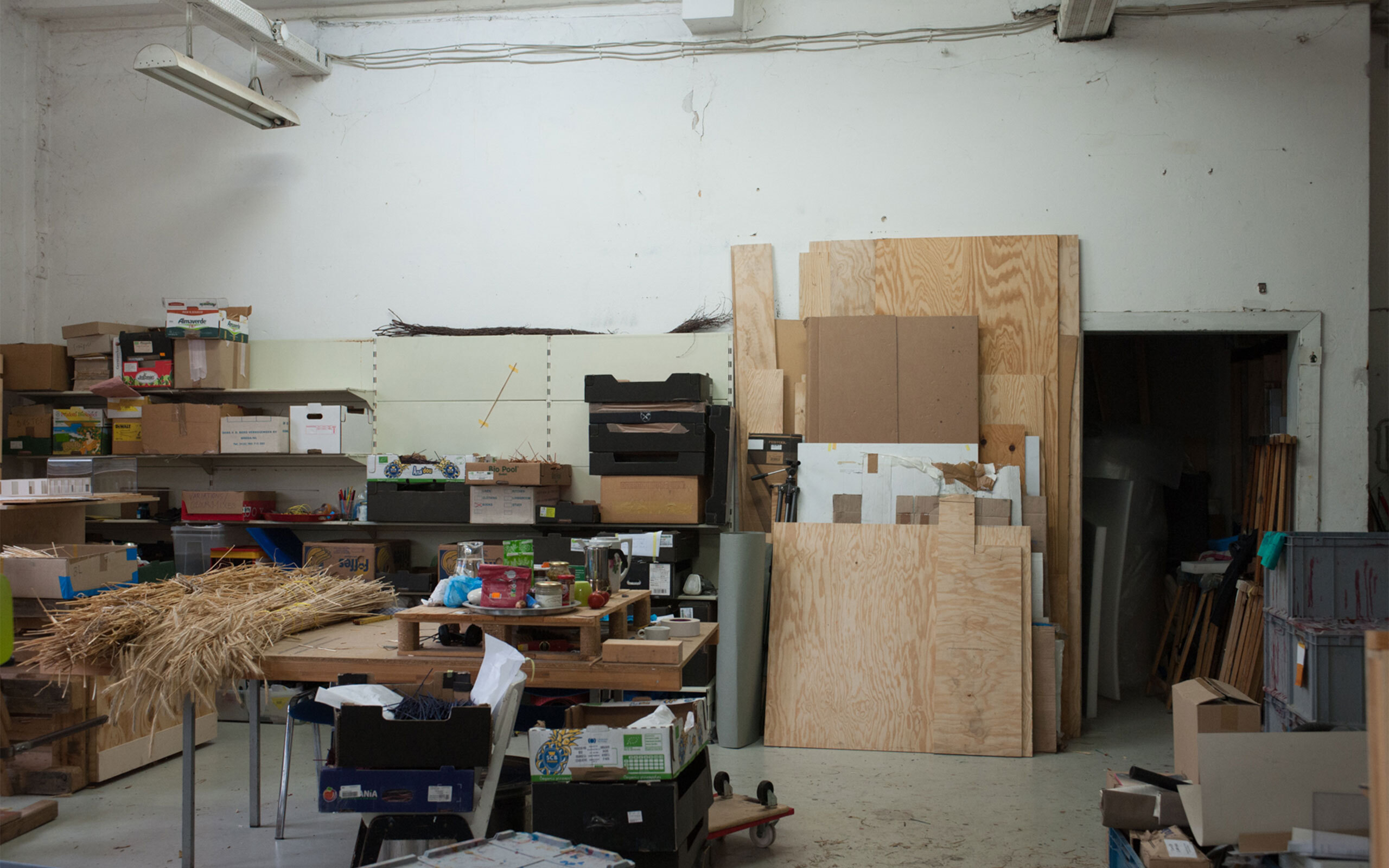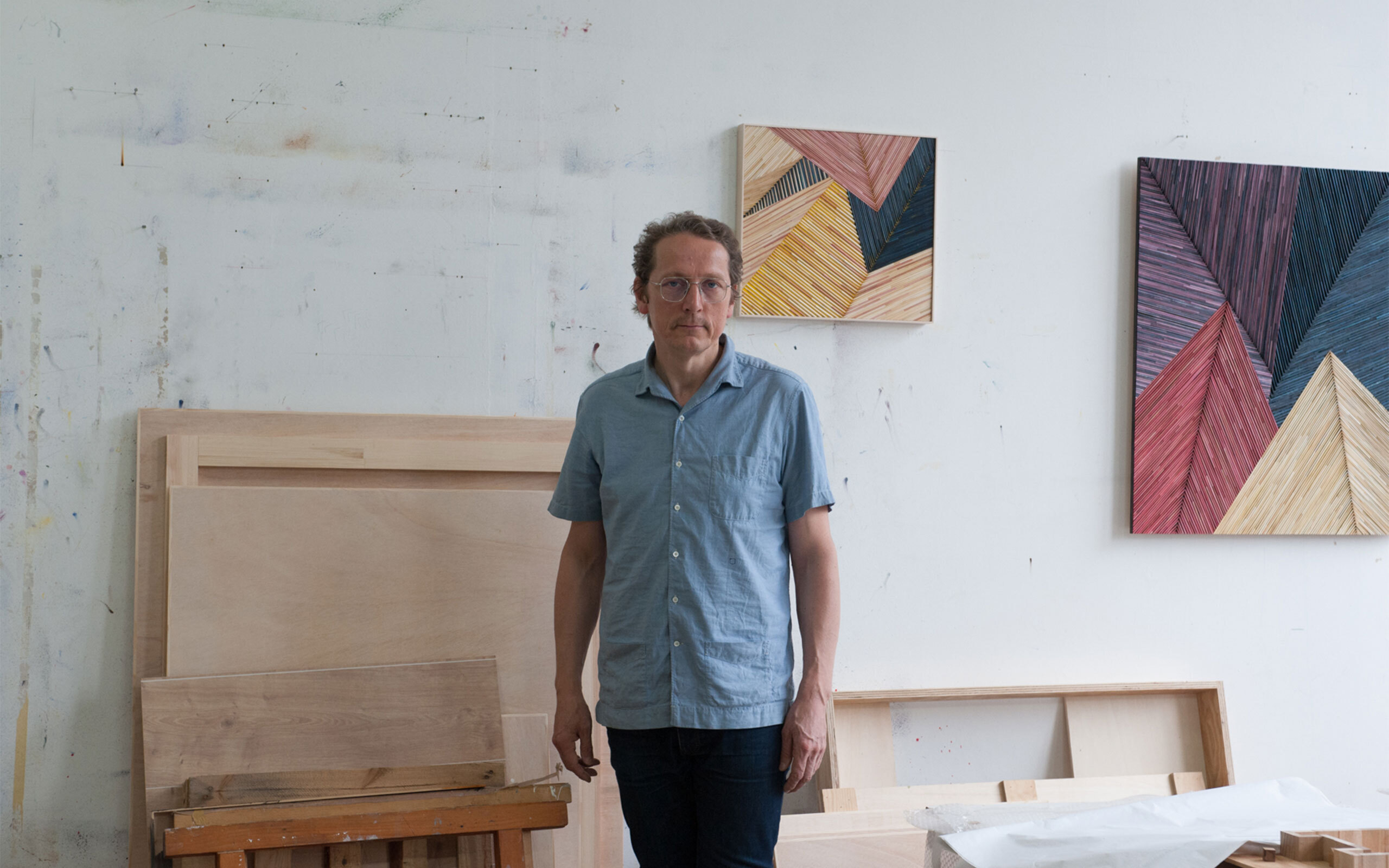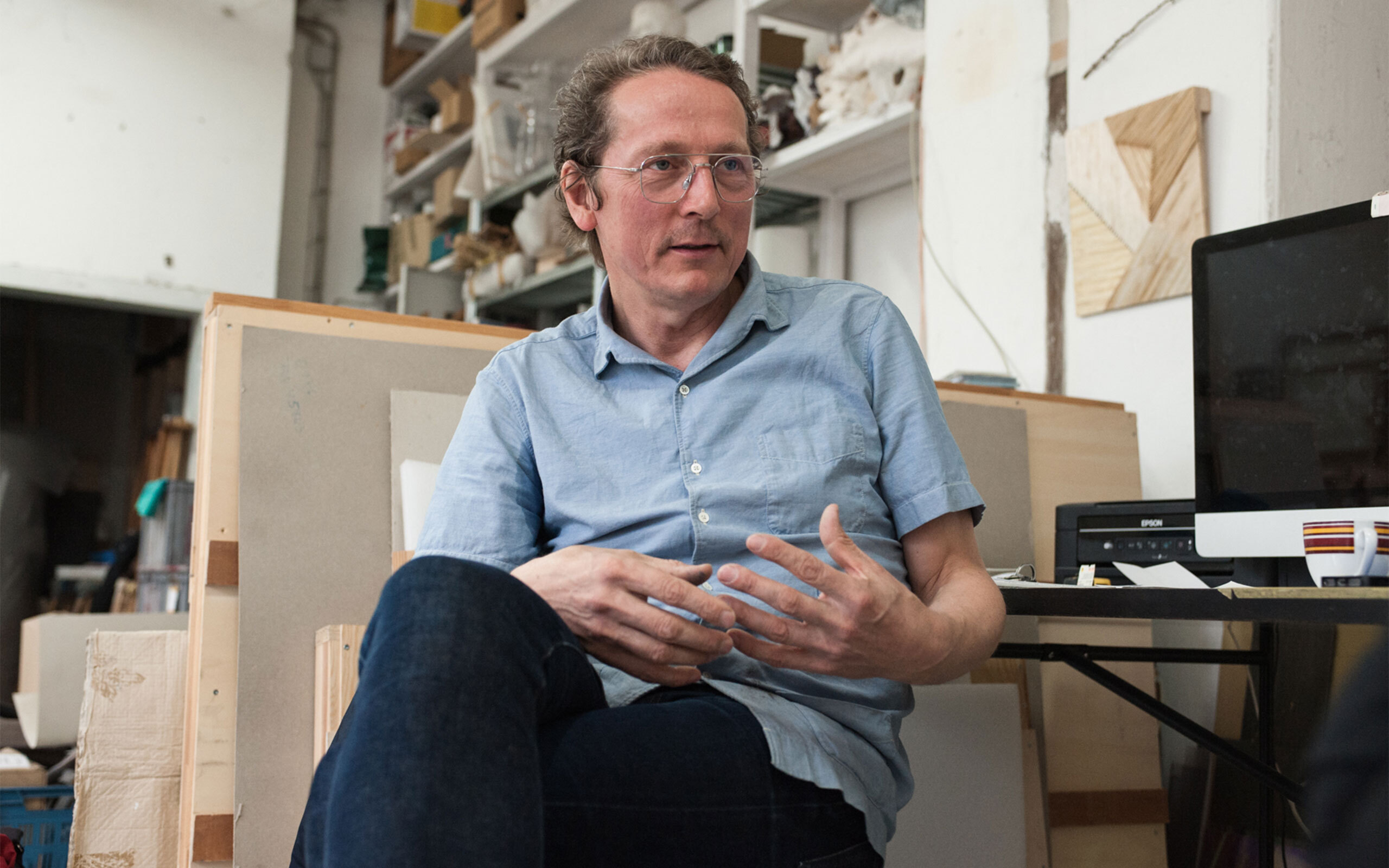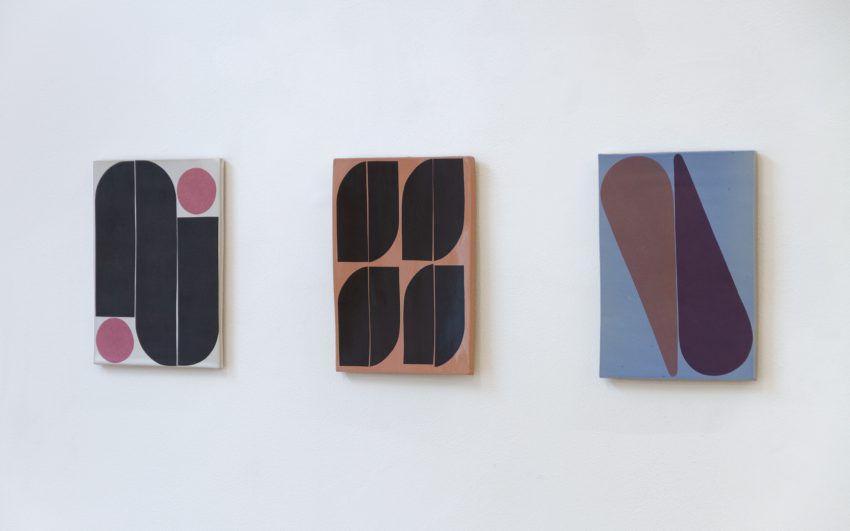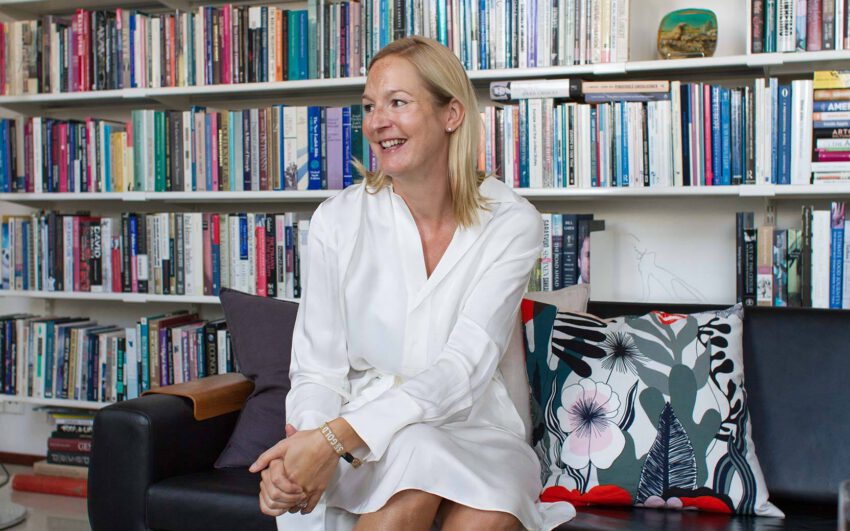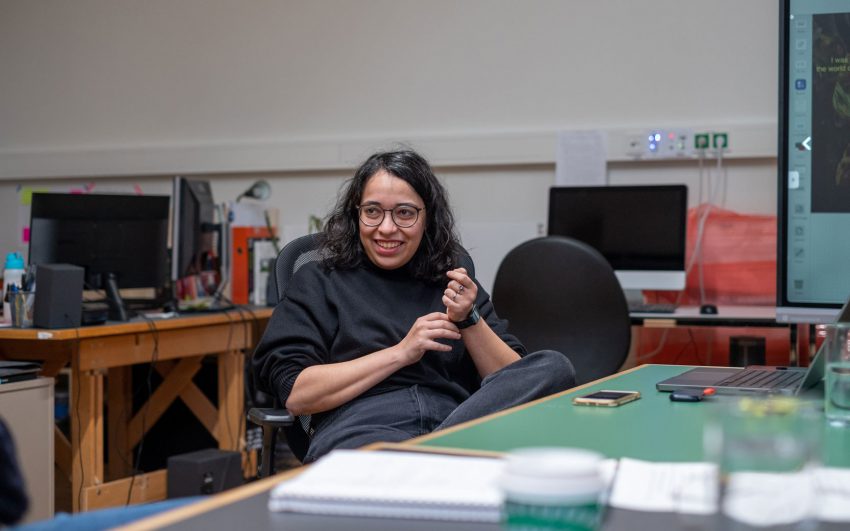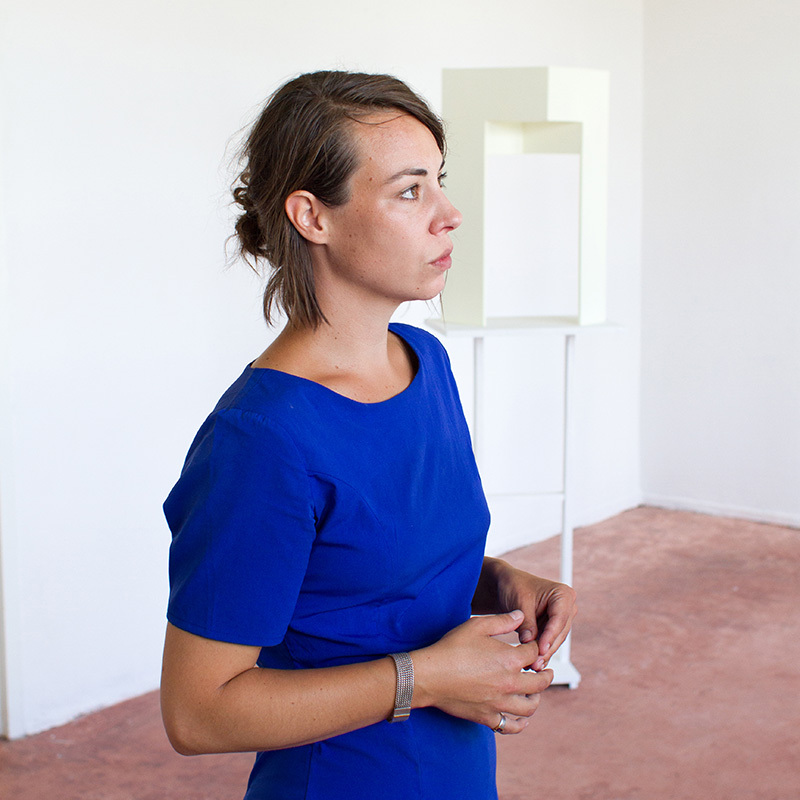In his multifaceted artistic work, Olaf Holzapfel deals with a wide variety of materials, ranging from straw to digitally produced drawings. He is interested in both the cultural techniques of indigenous peoples and virtual and physical spaces. His work has been shown internationally, including at documenta 14 in 2017 and at the 54th Biennale di Venezia in 2011. We talked to him about his concept of "being in between" in the world, about the artistic heritage of earlier generations of artists, and about the question of whether craftsmanship can be art.
Olaf, when you started to study painting at the HfBK in Dresden in 1996, you were 29. What did you do before that?
In 1989, I came as a refugee to Germany via Austria and Hungary. I needed the early 1990s to reorient myself. In the beginning, I lived in Erlangen. Then I travelled, visiting New York and India; I went to places that were to become important to me.
After your travels you decided to study painting?
No, not immediately. Actually I was inclined towards physics. Then I began to study architecture at the TU Dresden. Art came later.
You then studied painting with Prof. Ralf Kerbach in Dresden. Why in Dresden and not in Düsseldorf or somewhere else?
I checked out several universities. Dresden in the 1990s was completely chaotic, I believe we’ll ultimately realize that the foundation for a number of things that are acknowledged today were initially established during the upheaval that occurred after the collapse of the eastern bloc. But it was more than that, while Bavaria had a feel-good atmosphere, it was clear that in Dresden, Berlin, and the ”new federal states,” more substantial were happening.
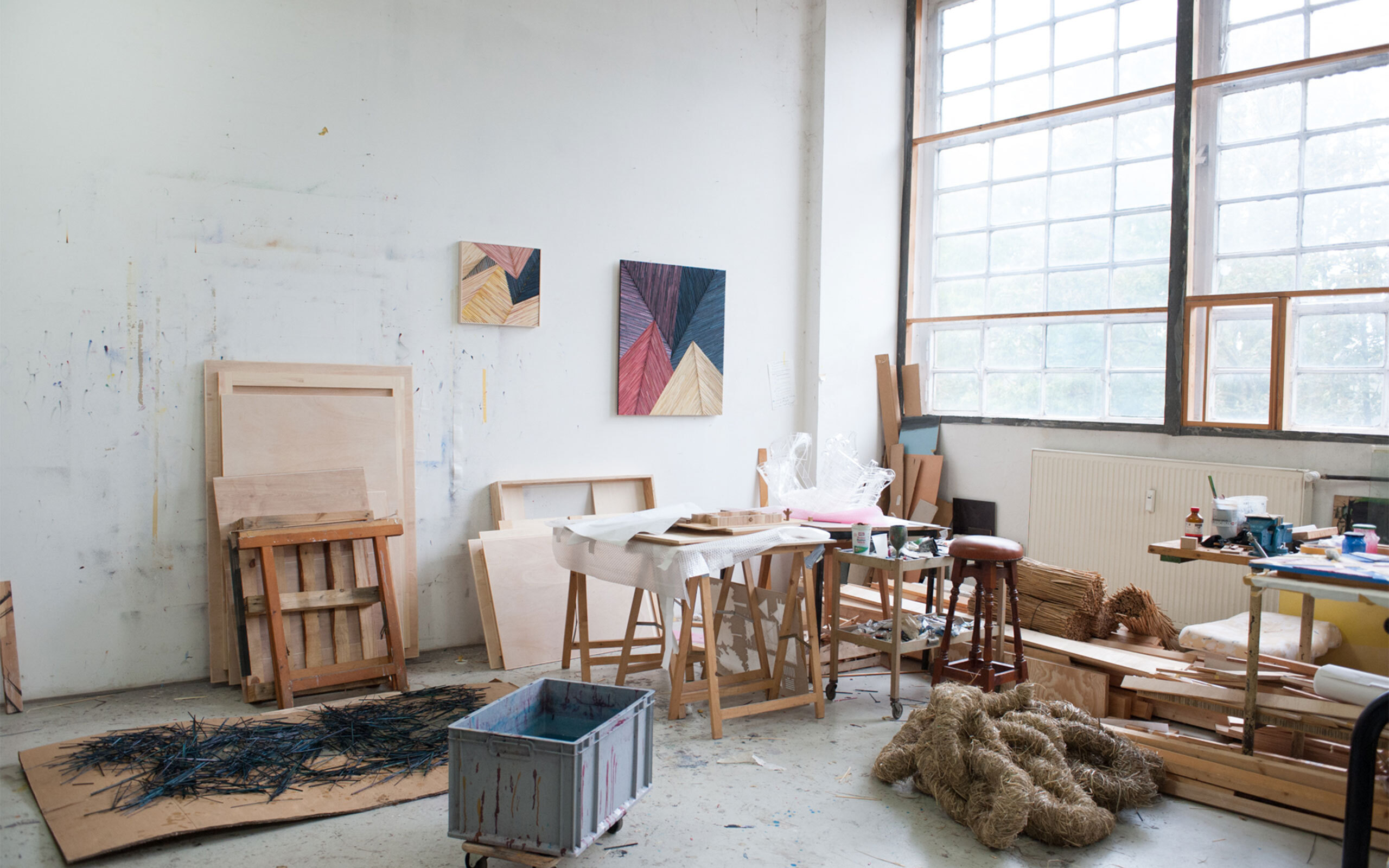
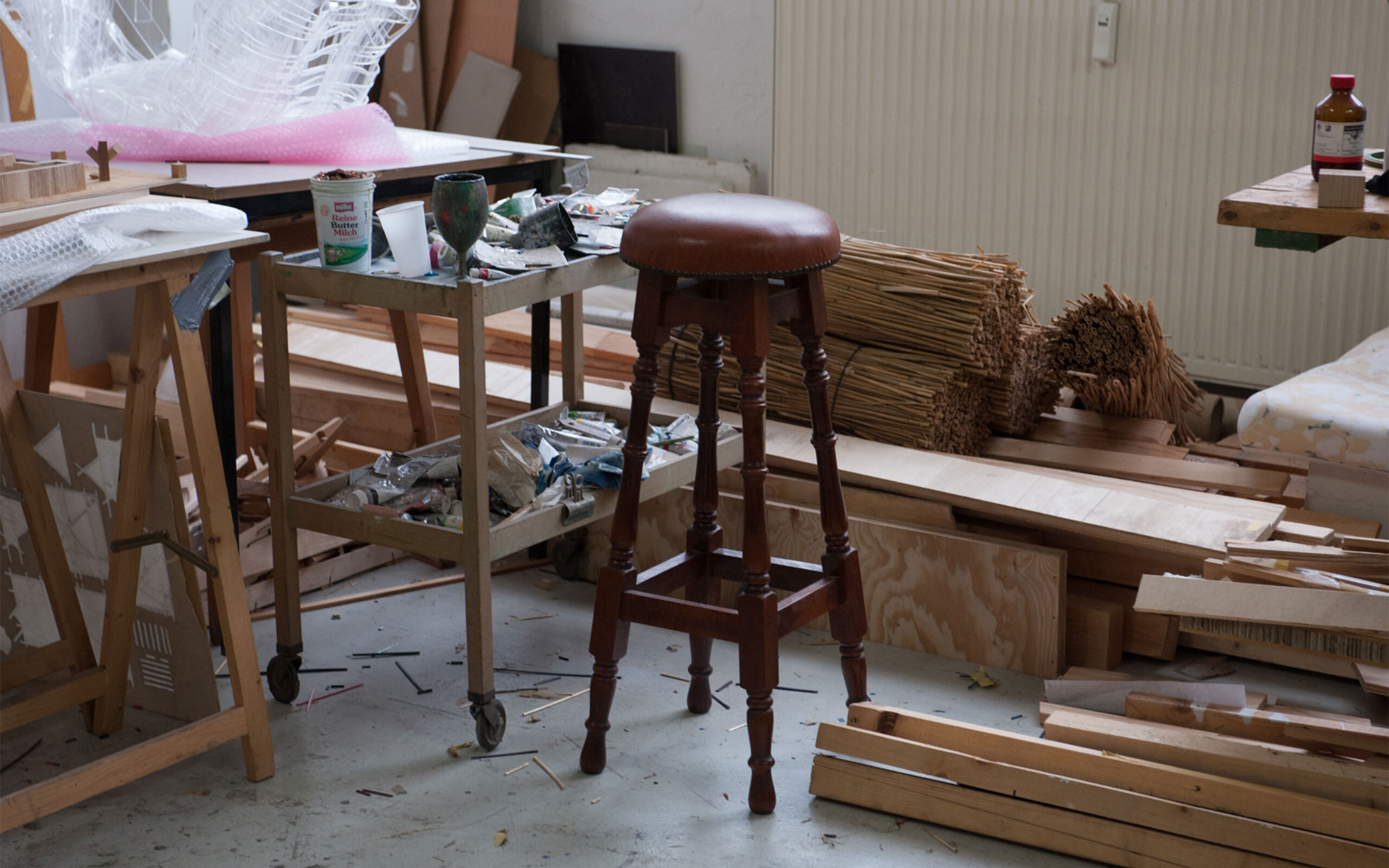
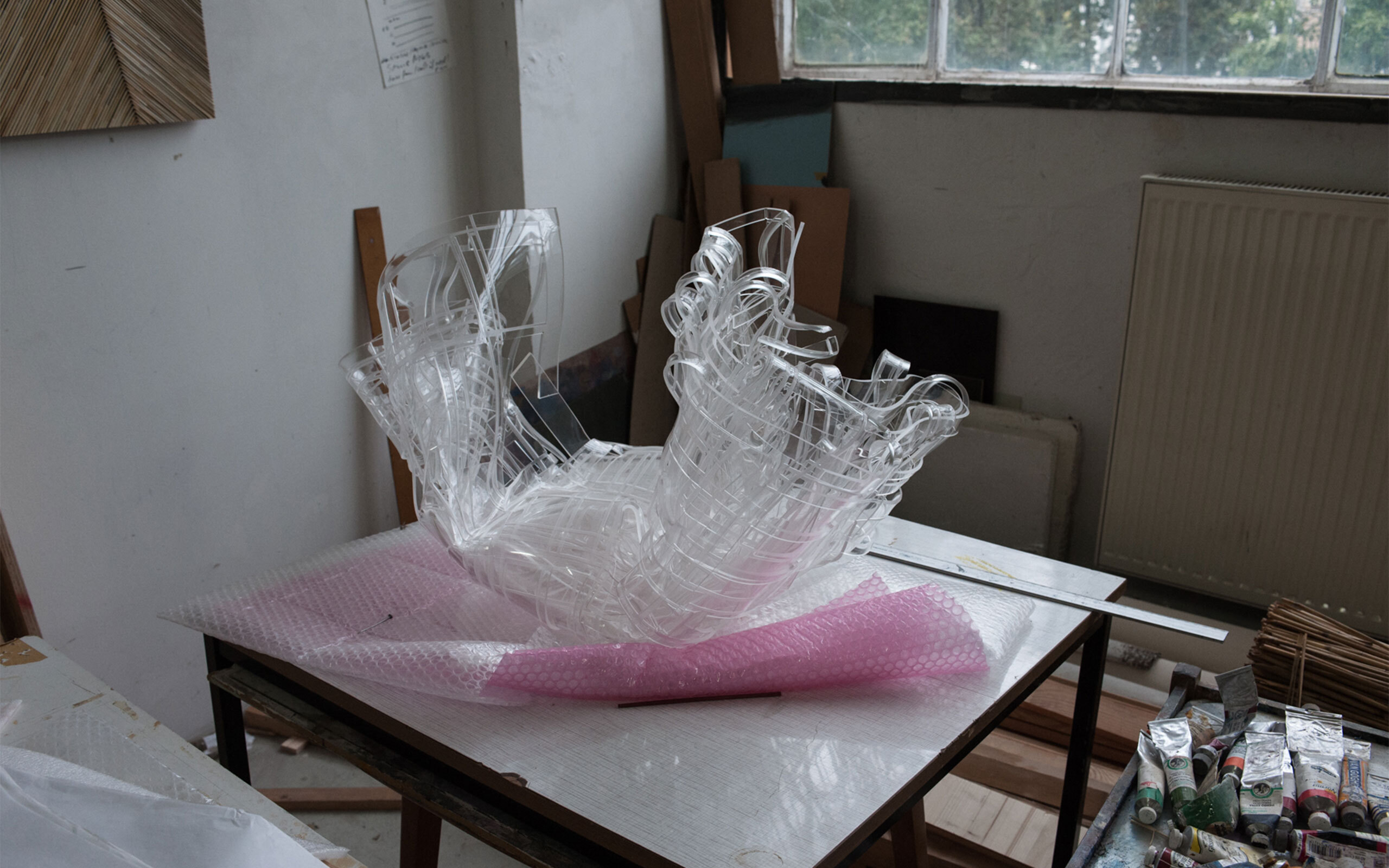
Looking back: how important was the study of painting for you compared to architecture?
What disturbed me was the circumstances in which I learned; you always learn most from the difficulties with which you are confronted. As an architect, you learn to cooperate with people. I like interacting with trades, with other cultural perspectives, that became an important part of my work.
Today you work more in the sculptural field, not so much in painting...
I'm a classic visual artist. For me, the separation between the genres is no longer a central issue. I am concerned with the pictorial per se and not necessarily with whether this is the second or third dimension in which I work. But some artists, for example Thomas Schütte, Mike Kelley, and Isa Genzken, have a somewhat different view.
The space is essential for many of your works. You once said that you like to be in the “in-between”. What does that mean for you?
You may say for example, that I fetishize a body, as did Rembrandt and Rodin, this goes to the substantive. I think that’s still at a fixed point, at least in terms of what deterministic thinking in Western art has long been, since the advent of western industrialization, which in terms of its interaction with other cultures has long been in state of decline. There is a book by Gotthard Günter entitled "The American Apocalypse," in which he describes that with the discovery of America it became clear to the Europeans that something different exists, something much larger than Europe, and that this garden in which we live is a fragile structure. For me, being in-between is an acceptance of the status quo. The difficulty with European thinking is to accept that one can pursue a goal in the in-between without it being a fixed objective and still obtain exactitude.
What role does virtual space play for you?
Virtual space is as present as industrialization was for Caspar David Friedrich. There are digital pictures by me that I created in the noughties, when I thought about what a digital and what an analog medium is and how they are connected, in particular in pictures. I am interested in participating in space, all space.
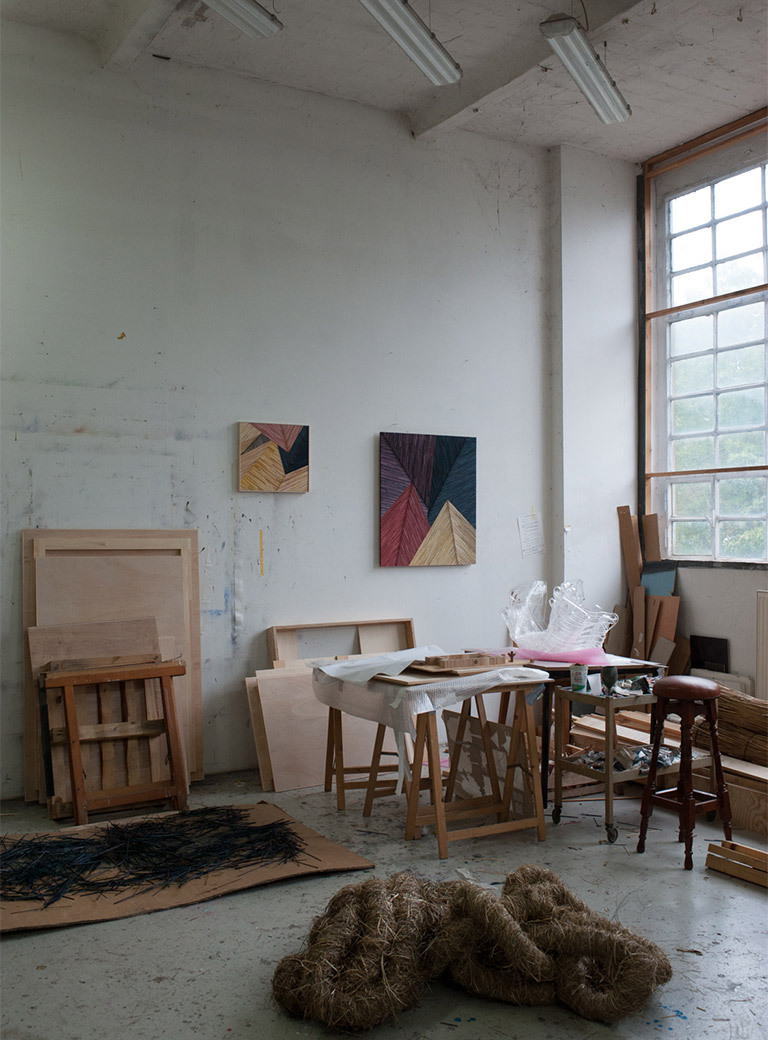
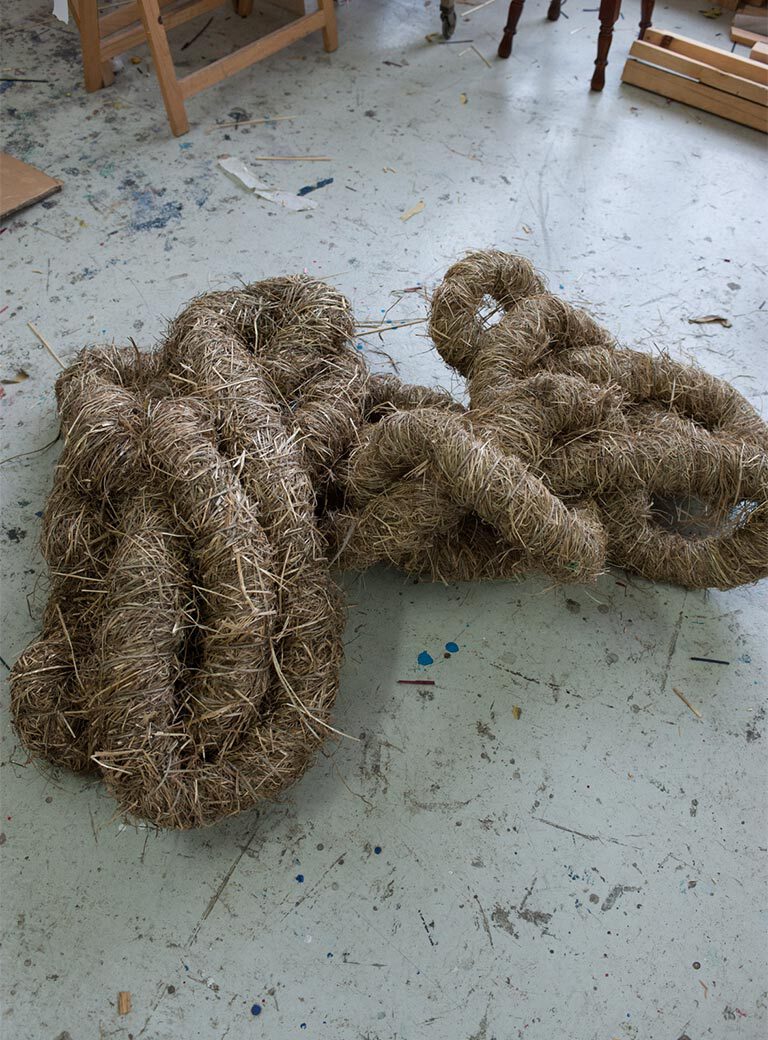
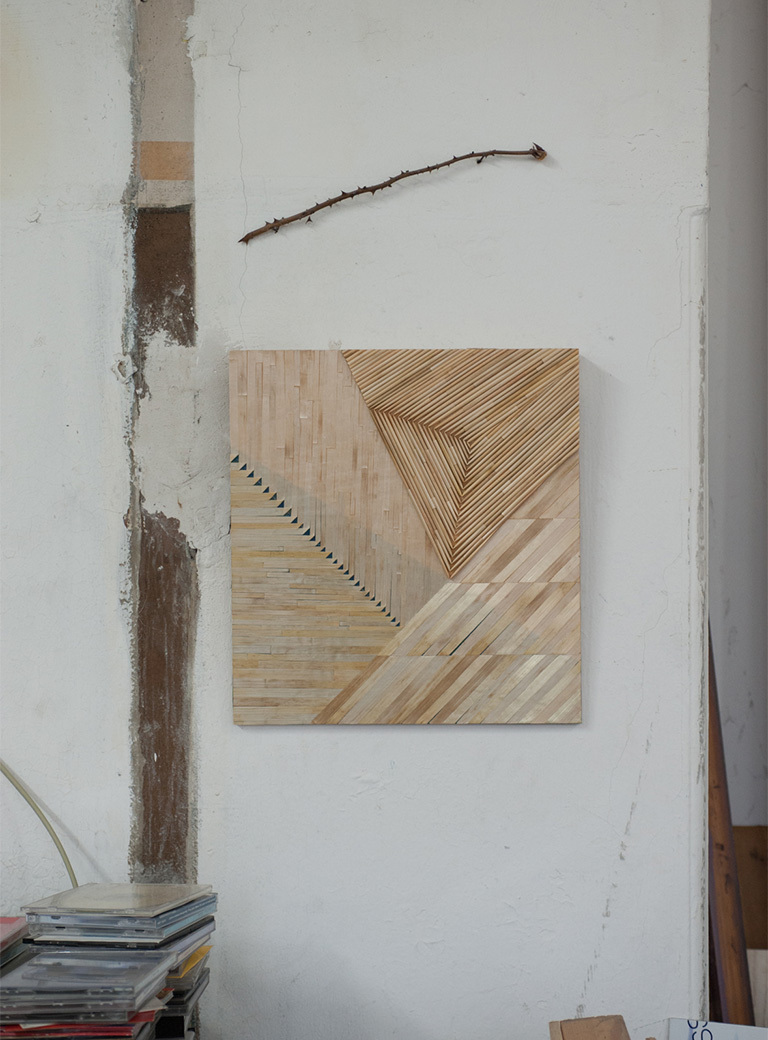
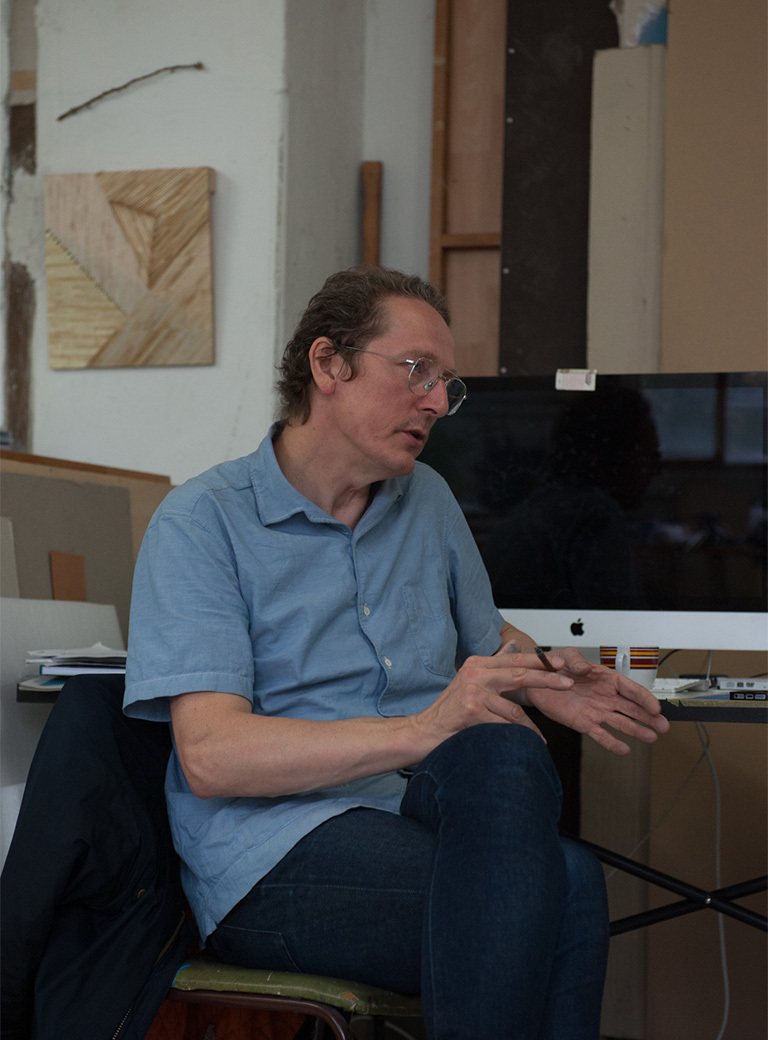
How do you discover the people, communities, houses, places, craft techniques, etc. that are often found as traces in your work?
I think Europeans have always travelled a lot in order to find out who they are. You can travel in the mind, but for me it was important to see things directly. Peter Sloterdijk once said that contemporary art is becoming more and more based on the surface and the effect. But the main artistic strategy is repetition and difference. I prefer to look at where the difference is in order to understand what I am doing or where I can evolve. Where are there interesting things that I can compare? In Tokyo I took photos of tactile markings for the blind. These markings for the blind exist all over the world. But the way they are placed in Tokyo is typically Japanese. These are the kinds of things I am looking for.
What interests you particularly in working with indigenous peoples like the Wichí?
The Wichí live in the jungle of South America. Interestingly, they have the same abstraction in their pictures that is contained in a city. The Wichí weave the abstraction of the world into their textiles over the landscape, which they hardly change. They have been nomads and their textiles are an abstraction of the wilderness. They also recognize order in nature, and do not have a transfigured or romantic view of nature. This was also a notion in Romanticism, for example in Runge’s, or later in Cézanne's work, that one recognizes the structure of nature. There is a connection between abstract things and natural things; this is not a contradiction.
How does the contact work on site, e.g. in Patagonia? Do you speak Spanish? How do you communicate with people with whom there is no common language?
I often work with local craftsmen who help me, which gives me a lot more input. I never go anywhere with preconceived ideas, but I develop the work together with the people I meet. We both make an offer and then we enter into a reciprocal process, no matter if they are carpenters in Germany or Wichí. I'm not saying "here's my design and now do it". The people themselves have knowledge and say they want to implement it in this or that way. This conversation – is not about the spoken word, but about the material, the method - that is the essential thing that happens. The knowledge is conveyed through the material.
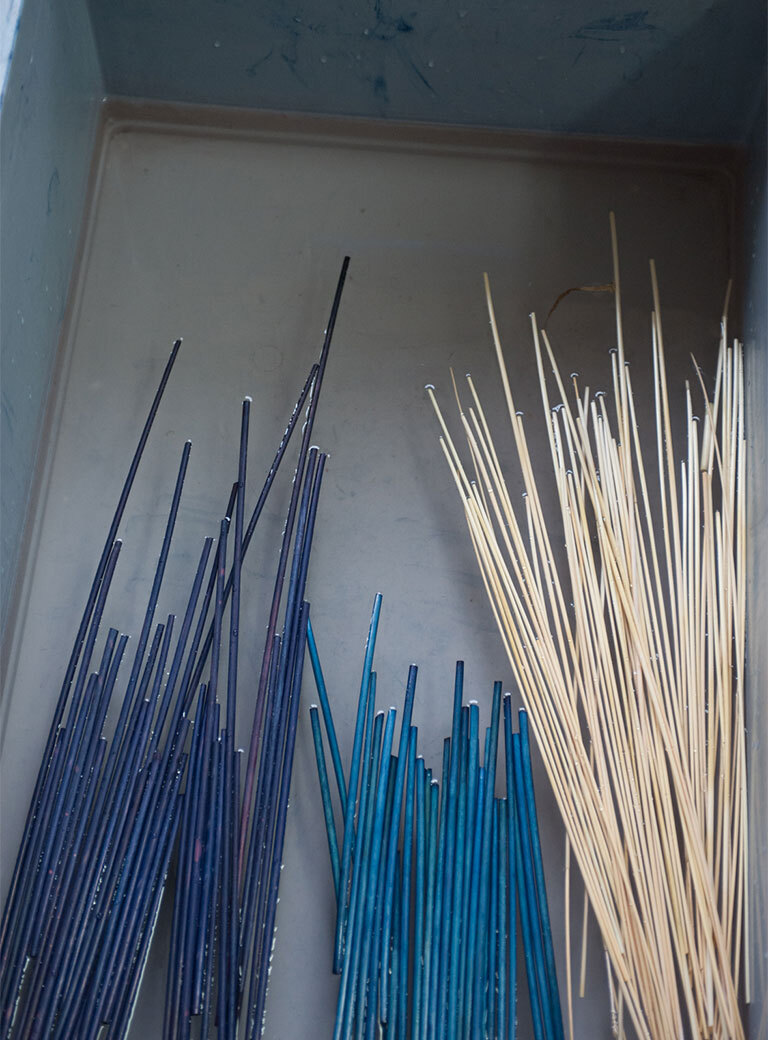
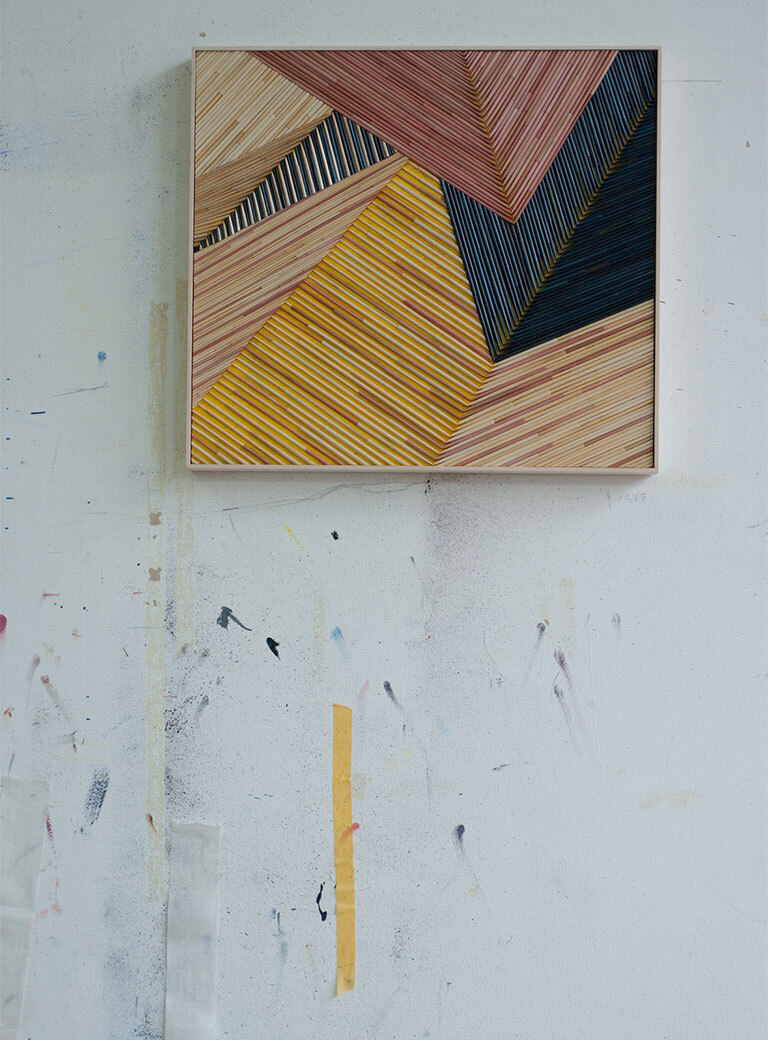
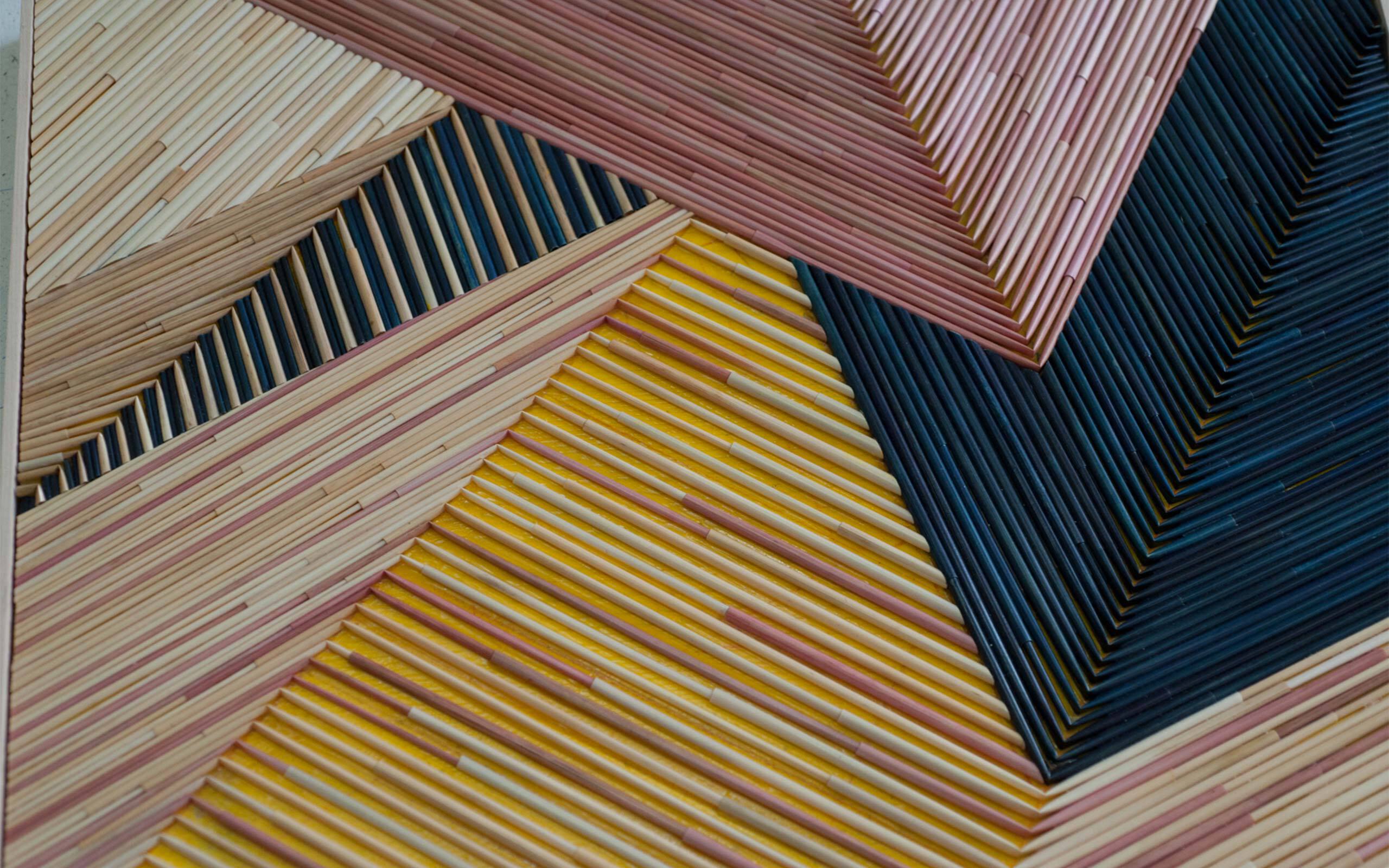
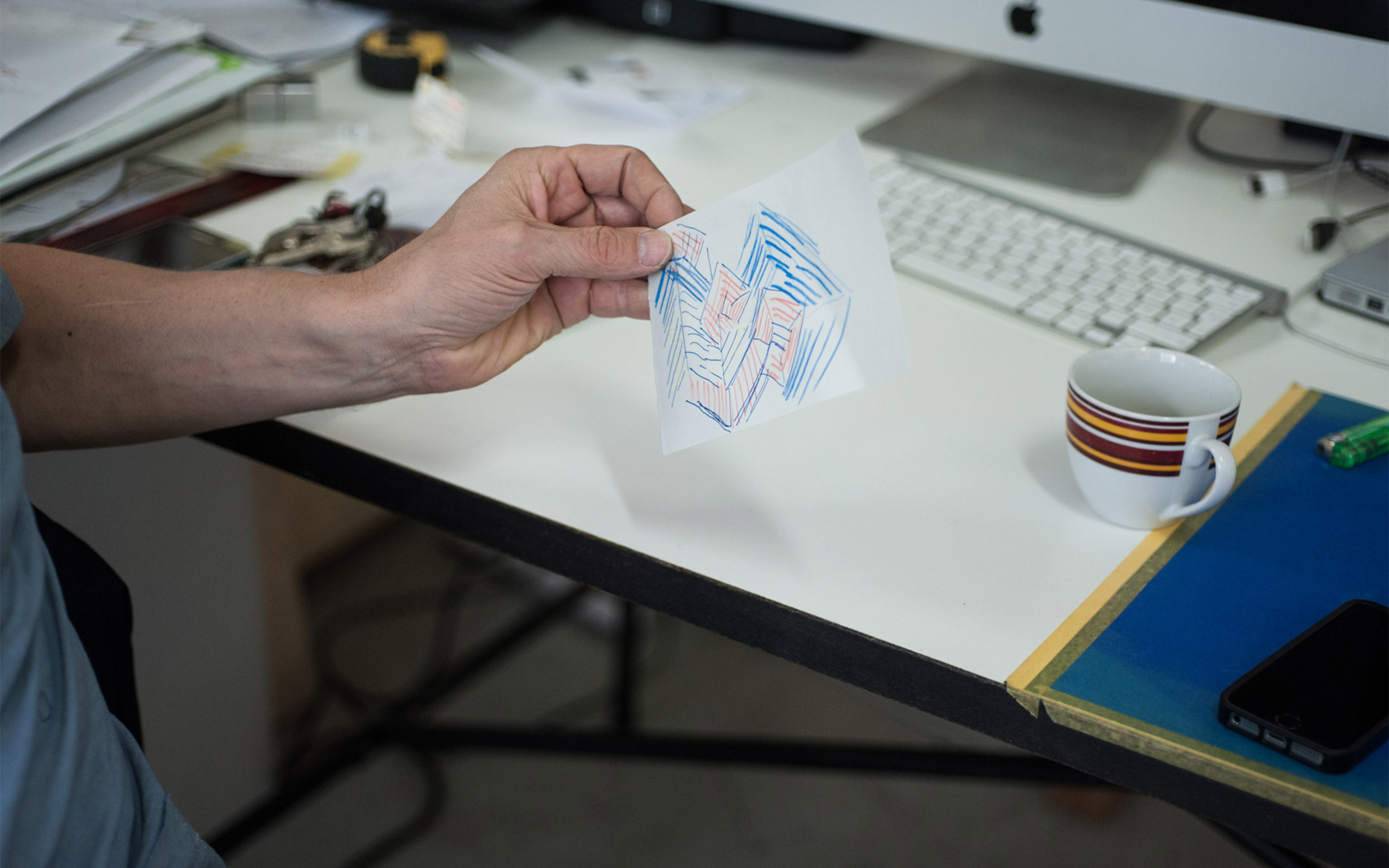
But with the hay pictures, the working process is different, isn't it?
These works have something to do with my work group of folds where I am concerned with fundamental questions. How do I bring a line, which is nevertheless also three-dimensional, into a surface? The working process is different, sometimes I design it digitally, sometimes with a hand drawing. The hay pictures are between surface and space. One says hay picture, but every fabric is also three-dimensional. The hay pictures are like a "blow up" of a canvas, they say something about how we see a canvas, how it is made. The interesting thing about the hay pictures is that they show that we can't get out of geometry at all. These are, as it were, my two themes: one is the material and its interpretation, but then there is also the part in me that deals with the abstract, with the exemplary (model-like), and that says that we can't ignore geometry. Geometry determines us. There is the sentence, “in the beginning was the word” or Niklas Luhman, who says that there is nothing that has not already been said, so you can't get out of it - but I refute that. In the fine arts, however, one often refers to space, and if I want to do something with space, then I immediately adapt to the laws of space, which are quite independent of language.
Are the hay pictures your contemporary answer to the preoccupation with light, nature, and landscape, as for example Impressionists like Monet dealt with hay pictures and light?
As a painter, I always deal with light. My interest in light comes from painting. The basic question is: Is it more about the technical aspects or more about the symbolic world? For me it is no different to digital, I assume that there is a coding through the material. With Beuys this is rather symbolic. It warms, for example, and it's all about the qualities you feel. For me, it's more about the qualities you see or use when you connect something together.
You often work with natural materials, reed, wood, hay, etc. Why? What fascinates you about these materials?
I have been working with the city as a landscape. For me there is a flowing transition between the city and the country. Just because it's so organized by division of labor, we don't necessarily notice it anymore. We always get to buy preliminary products. Berlin is surrounded by fields and forests. And if you only see the forests as built-in architecture, you quickly forget that. It will come back because it is our natural resource.
Is the employment of natural materials also a kind of "going back to the origins"?
It does not go back because the natural material is always there. There is the one thinking that always wants progress and then there are things that are just there. They also evolve, but they are slower. Art often makes the mistake of asking who is developing the latest word, but this makes the developments smaller and smaller. If in the past an artist could develop an oeuvre over 30, 40 years because he also had a feeling, okay, the symbolic values are set, today the discourses become faster and faster. But these seldom proceed from the material, but from the interpretation. The question, “do you want to go back to nature" or "back to the roots" expresses that something has been severed. But that's just not true at all. It's never finished, only you don't make anything yourself and don't participate anymore, but someone else still does. It is actually a reappropriation of one's own environment.
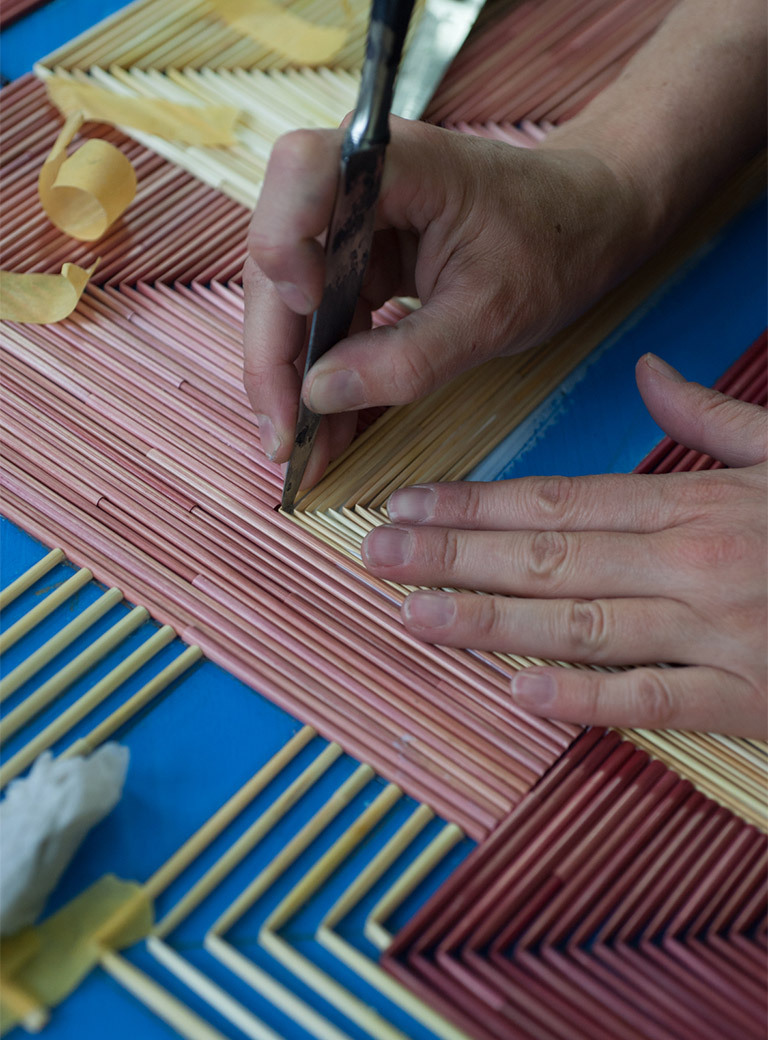
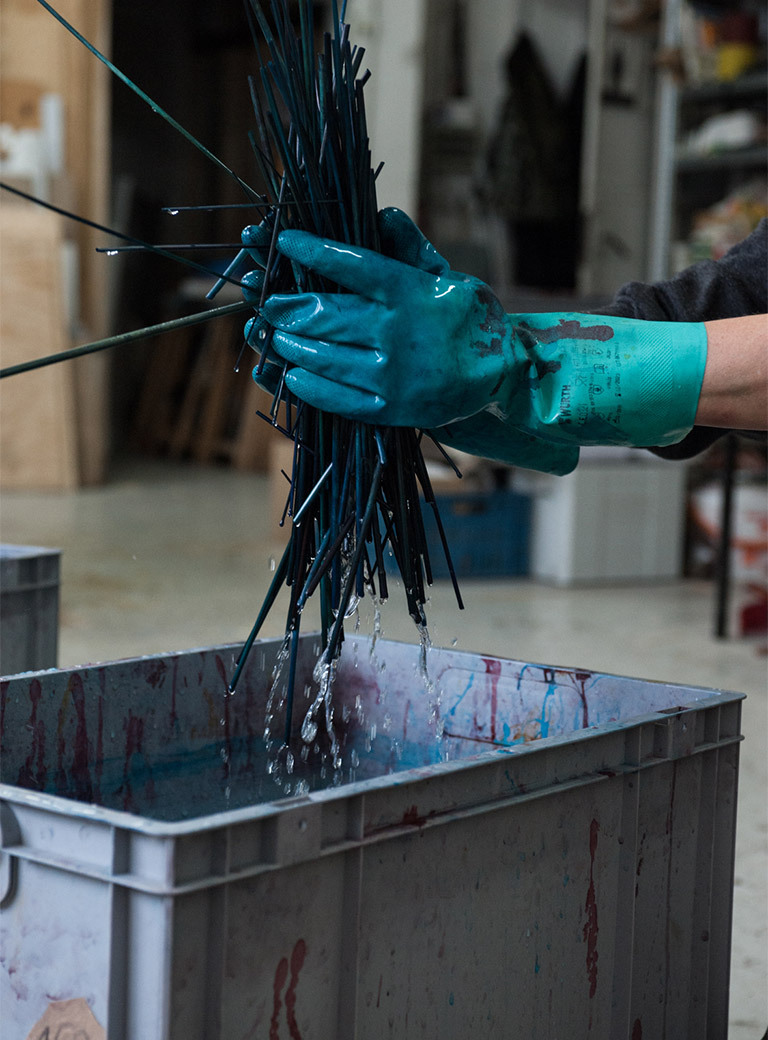
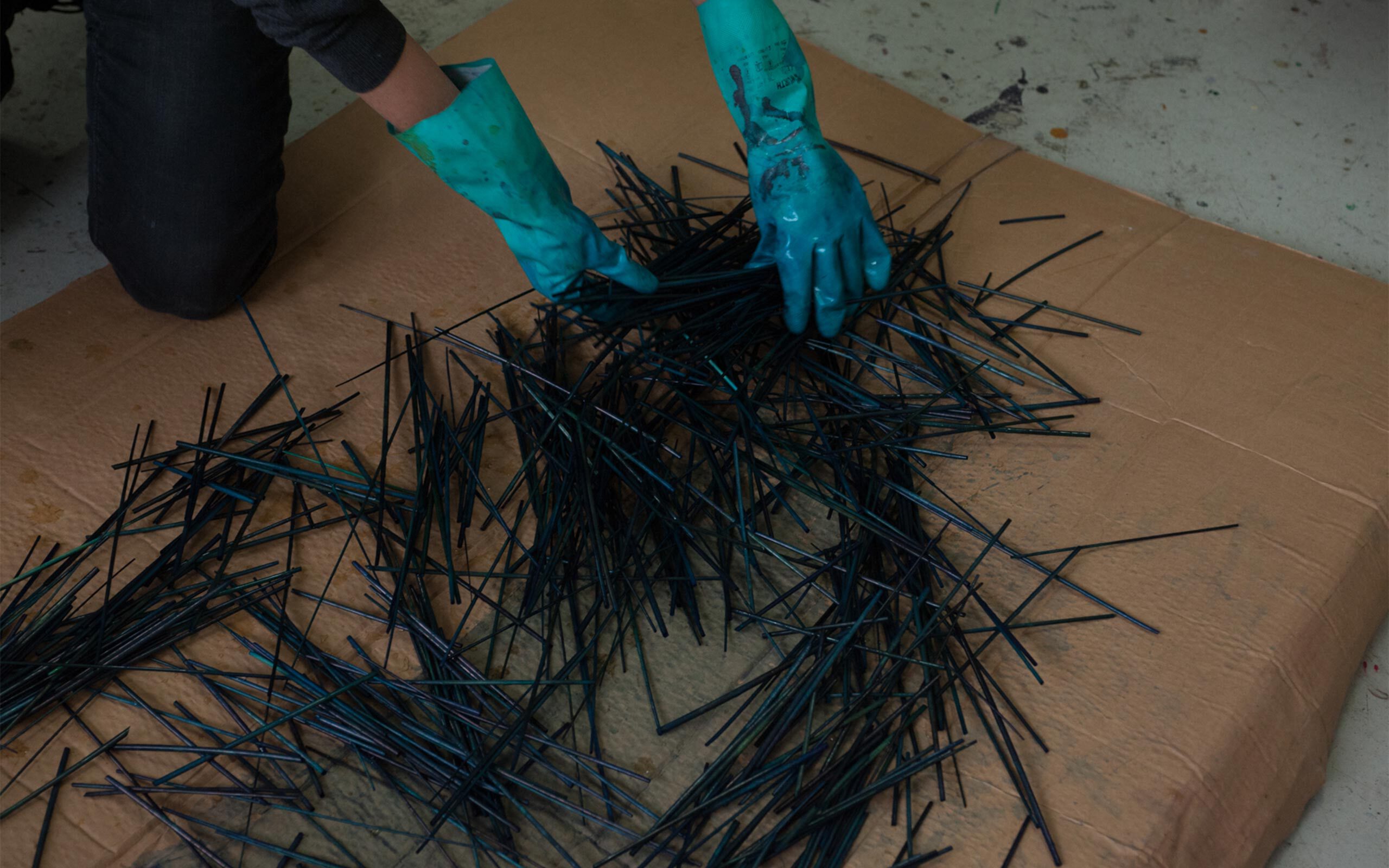
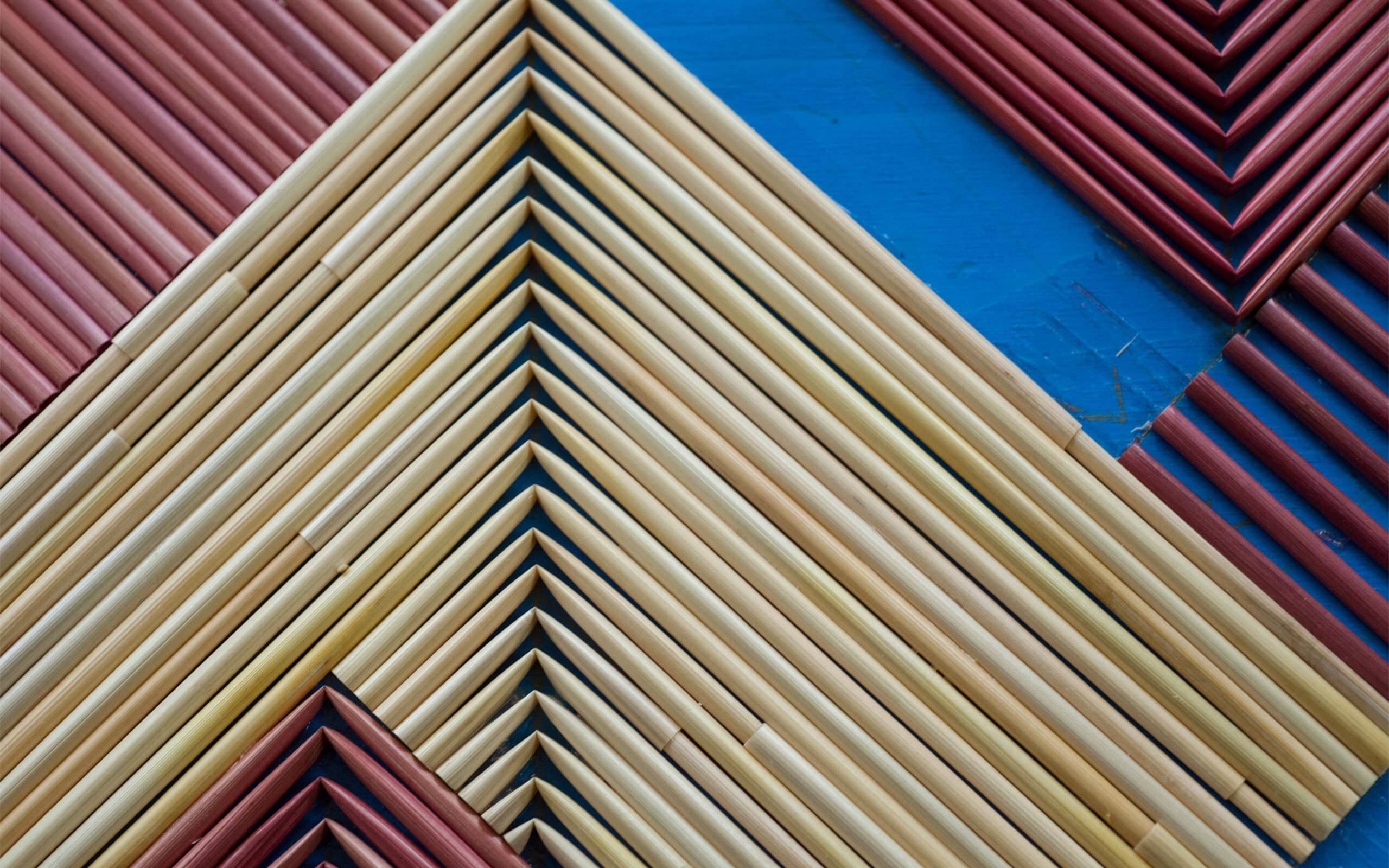
Is Art a craft? Is craft art?
Art is a completely open space, and this material world by which we are permanently surrounded and in which we live, if you want to turn it into a spiritual territory, then craftsmanship is needed.
There are many levels in your work, much more than you can see at first glance. How important is it to you that viewers understand that?
I think it's best if you have a work of art that you can look at for a long time and that has multiple layers that are revealed through repeated looking. The level “transformation through practice” is very important here. For me, a Titian painting is never of the past as long as it is present and I can live with it. But it is still there. And he painted it for the fact that it is still there. This is also an artistic strategy to do something that is not only for the moment. It may be a human exaltation to want to create something that survives time. But that's what art is all about.
If you paint a picture in different blues today, is that a color-theoretical decision or an artistic gut feeling?
My decision comes from entertainment. Every one of my artworks comes out of an inner conversation with artists that have already existed. In my last exhibition at Daniel Marzona I noticed afterwards: there is a reference to Mondrian, one to Herrmann Glöckner, and one to Hokusai. But that only became clear to me when the pictures were finished. Appropriation of artistic strategies always means forgetting something. If you want to sublimate them, you have to be able to forget them again. It is important to me to do something new. You don't achieve that by referring directly to the old. There ist art which have to quote all the time. The artists put themselves on the spot. They are caught in their own artistic strategy. If you go to a museum a year later, then it's all just old. In other words, the confrontation with the old is important, but there is a moment when you have to let go in order to go your own way.
